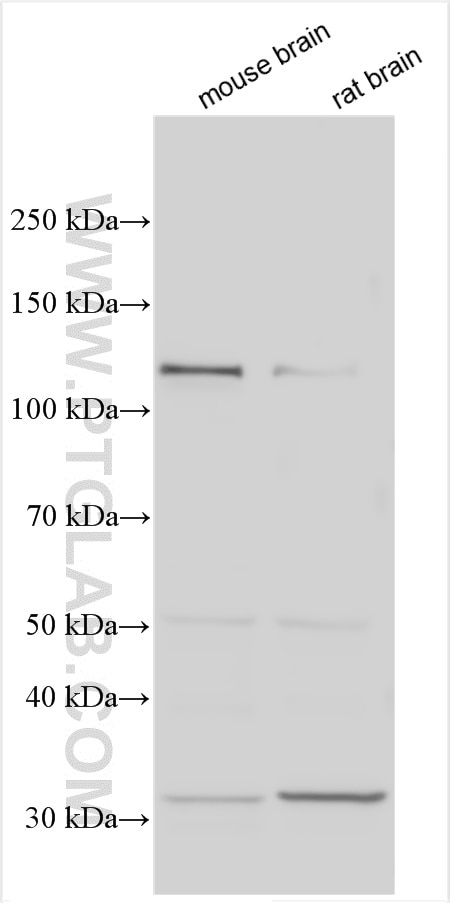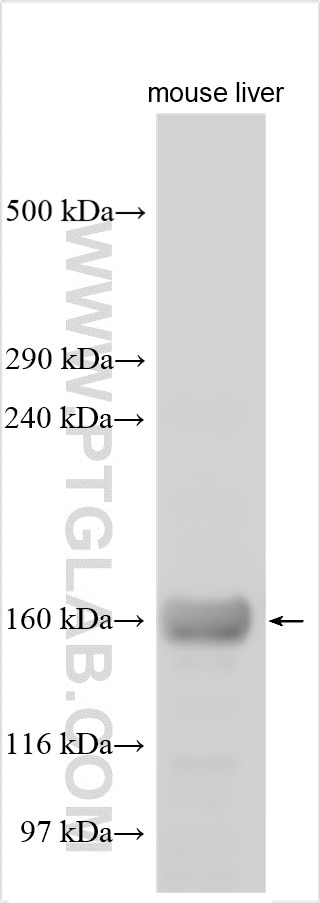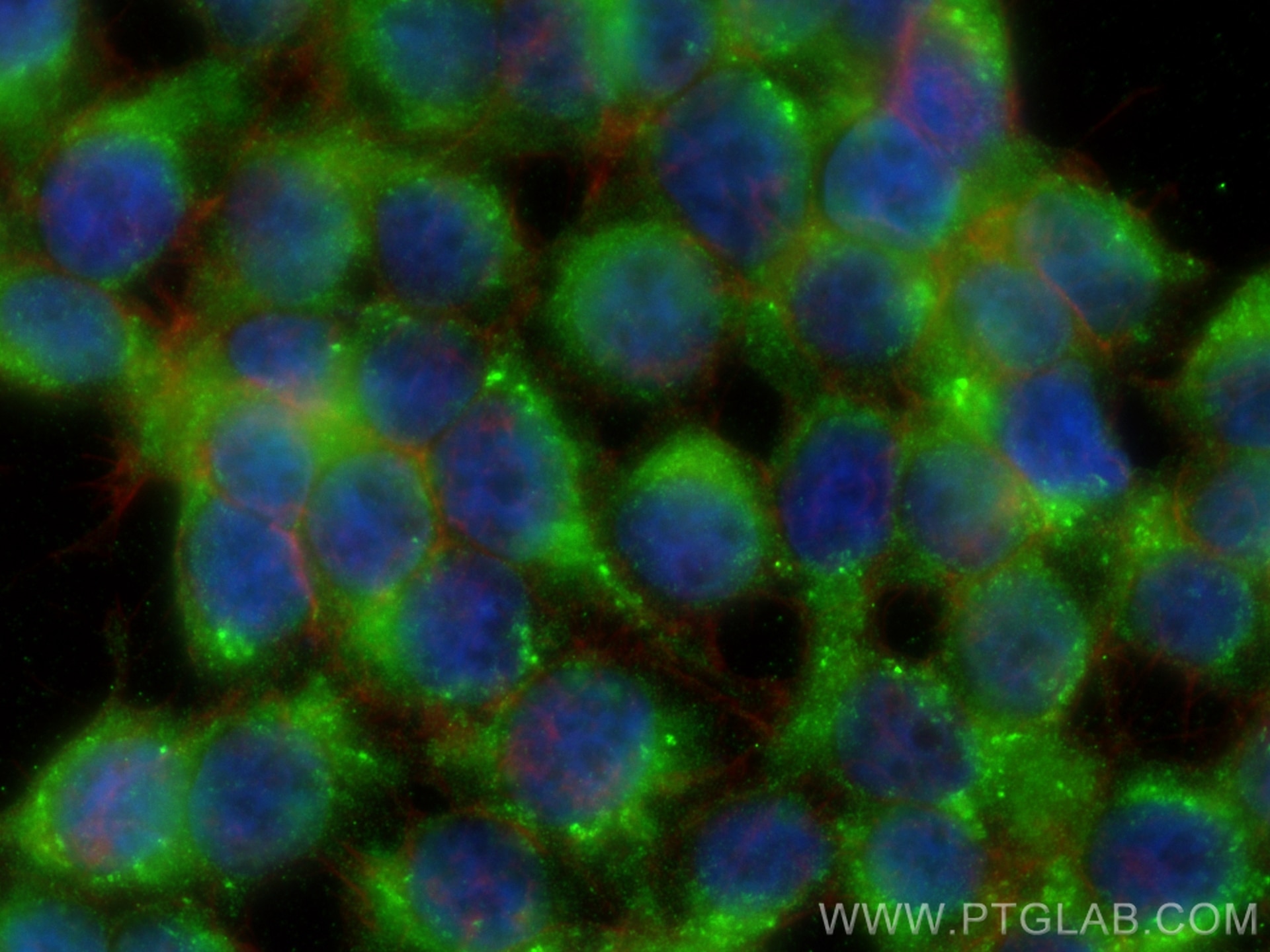PCDH15 Polyklonaler Antikörper
PCDH15 Polyklonal Antikörper für WB, IF/ICC, ELISA
Wirt / Isotyp
Kaninchen / IgG
Getestete Reaktivität
human, Maus, Ratte
Anwendung
WB, IF/ICC, ELISA
Konjugation
Unkonjugiert
Kat-Nr. : 20719-1-AP
Synonyme
Geprüfte Anwendungen
| Erfolgreiche Detektion in WB | Maushirngewebe, Mauslebergewebe, Rattenhirngewebe |
| Erfolgreiche Detektion in IF/ICC | HEK-293-Zellen |
Empfohlene Verdünnung
| Anwendung | Verdünnung |
|---|---|
| Western Blot (WB) | WB : 1:500-1:1000 |
| Immunfluoreszenz (IF)/ICC | IF/ICC : 1:200-1:800 |
| It is recommended that this reagent should be titrated in each testing system to obtain optimal results. | |
| Sample-dependent, check data in validation data gallery | |
Produktinformation
20719-1-AP bindet in WB, IF/ICC, ELISA PCDH15 und zeigt Reaktivität mit human, Maus, Ratten
| Getestete Reaktivität | human, Maus, Ratte |
| Wirt / Isotyp | Kaninchen / IgG |
| Klonalität | Polyklonal |
| Typ | Antikörper |
| Immunogen | Peptid |
| Vollständiger Name | protocadherin 15 |
| Berechnetes Molekulargewicht | 216 kDa |
| Beobachtetes Molekulargewicht | 120 kDa, 50 kDa |
| GenBank-Zugangsnummer | NM_033056 |
| Gene symbol | PCDH15 |
| Gene ID (NCBI) | 65217 |
| Konjugation | Unkonjugiert |
| Form | Liquid |
| Reinigungsmethode | Antigen-Affinitätsreinigung |
| Lagerungspuffer | PBS with 0.02% sodium azide and 50% glycerol |
| Lagerungsbedingungen | Bei -20°C lagern. Nach dem Versand ein Jahr lang stabil Aliquotieren ist bei -20oC Lagerung nicht notwendig. 20ul Größen enthalten 0,1% BSA. |
Hintergrundinformationen
Protocadherin-15 (PCDH15) belongs to the cadherin superfamily that mediates calcium-dependent cell-cell adhesion and plays an important role in the maintenance of normal tissue architecture. A homozygous variant in PCDH15 results in Usher syndrome type 1F (USH1F) which leads to congenital hearing loss and syndromicretinitis pigmentosa (PMID: 38014037). Multiple isoforms of PCDH15 have been described, including 216-250 kDa (full-length), 150-180 kDa, 100-120 kDa, 50-65 kDa, and 25-40 kDa (PMID: 22363448; 15928608; 14570705; 23035094; 28883094).
Protokolle
| PRODUKTSPEZIFISCHE PROTOKOLLE | |
|---|---|
| WB protocol for PCDH15 antibody 20719-1-AP | Protokoll herunterladen |
| STANDARD-PROTOKOLLE | |
|---|---|
| Klicken Sie hier, um unsere Standardprotokolle anzuzeigen |




